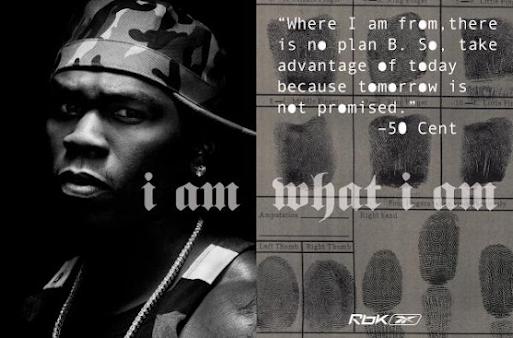SCORE HAIR CREAM CSP
Media Factsheet - Score hair cream
1) How did advertising techniques change in the 1960s and how does the Score advert reflect this change?
- According to AdAge (adage.com), advertising agencies in the 1960s relied less on market research and leaned more toward creative instinct in planning their campaigns.
2) What representations of women were found in post-war British advertising campaigns?
- Campaigns that very effectively reinforced that idea that a woman’s place was in the home. Ironically, during the Second World War, propaganda posters had convinced women that their place was on farms and in factories while the men were away fighting.
3) Conduct your own semiotic analysis of the Score hair cream advert: What are the connotations of the mise-en-scene in the image? You may wish to link this to relevant contexts too.
- male is held above the women symbolising male superiority.
- women dressed in revealing clothing to appeal to male audience.
- background displays colonial past of Britain.
4) What does the factsheet suggest in terms of a narrative analysis of the Score hair cream advert?
- The Score advert identifies the man as Propp’s ‘hero’ in this narrative. The image infers that he is ‘exulted’ as the hunter-protector of his ‘tribe’. The adoration, and availability, of the females are his reward for such masculine endeavours. The idea of women being sexually available and falling at the feet of a man is echoed in the long running series of Lynx deodorant commercials that ran for the greater part of the early twentieth century.
5) How might an audience have responded to the advert in 1967? What about in the 2020s?
- Since that women were still fighting for equality during the second wave of feminism, acts like the Equal Pay Act had not been passed, and it was still widely known that society was patriarchal and that men dominated almost everything, the advertisement's objectification of women for the sake of males would have been accepted as normal.
6) How does the Score hair cream advert use persuasive techniques (e.g. anchorage text, slogan, product information) to sell the product to an audience?
-direct address.
7) How might you apply feminist theory to the Score hair cream advert - such as van Zoonen, bell hooks or Judith Butler?
- Van Zoonen argues that gender is constructed and that its meaning varies dependant on cultural and historical context. this links to score since thaey are trying to contract current gender meanings back to the old meaning.
8) How could David Gauntlett's theory regarding gender identity be applied to the Score hair cream advert?
- David Gauntlett argues that both media producers and audiences play a role in constructing identities. The role of the producer in shaping ideas about masculinity is clear in the Score advert, which is undoubtedly similar to countless other media texts of that era.
9) What representation of sexuality can be found in the advert and why might this link to the 1967 decriminalisation of homosexuality (historical and cultural context)?
- the advert is trying tocalm down fears after the decriminalisation of the homosexuality by encouraging men to use hair products.
10) How does the advert reflect Britain's colonial past - another important historical and cultural context?
- the setting behind the characters in the advert.
The Drum: This Boy Can article
1) Why does the writer suggest that we may face a "growing 'boy crisis'"?
- There’s an unconscious bias that males should simply ‘man up’ and deal with any crisis of confidence themselves. After all, men (certainly white, middle-class, Western men) are better paid, have more opportunities and are not inhumanely oppressed in some parts of the world. Yet, the reality is that men commit suicide more than women, and are more likely to drop out of education and get involved in crime, drugs and binge-drinking. Moreover, as women are increasingly empowered, many men feel increasingly disempowered, accentuating these social problems.
2) How has the Axe/Lynx brand changed its marketing to present a different representation of masculinity?
- As Lynx/Axe found when it undertook a large-scale research project into modern male identity, men are craving a more diverse definition of what it means to be a ‘successful’ man in 2016, and to relieve the unrelenting pressure on them to conform to suffocating, old paradigms. This insight led to the step-change ‘Find Your Magic’ campaign from the former bad-boy brand.
3) How does campaigner David Brockway, quoted in the article, suggest advertisers "totally reinvent gender constructs"?
- To paint a world where boys like pink, don't like going out and getting dirty, or aren't career ambitious.
4) How have changes in family and society altered how brands are targeting their products?
- Whincup suggests experimenting with social media as it allows flexibility and for more targeted messages. Additionally, if it doesn’t work, it can be removed. One example is the Campaign Against Living Miserably (CALM), which raises awareness of male suicide. The charity is chipping away at loaded language that puts pressure on men through its #mandictionary, a place online where men can “redefine themselves on their own terms”.
5) Why does Fernando Desouches, Axe/Lynx global brand development director, say you've got to "set the platform" before you explode the myth of masculinity?
- “This is just the beginning. The slap in the face to say ‘this is masculinity’. All these guys [in the ad] are attractive. Now we have our platform and our point of view, we can break the man-bullshit and show it doesn’t matter who you want to be, just express yourself and we will support that.
“What being a man means, and what ‘success’ means, is changing and this change is for the good. The message hasn’t exploded yet but we will make it explode. We will democratise it.”

Comments
Post a Comment